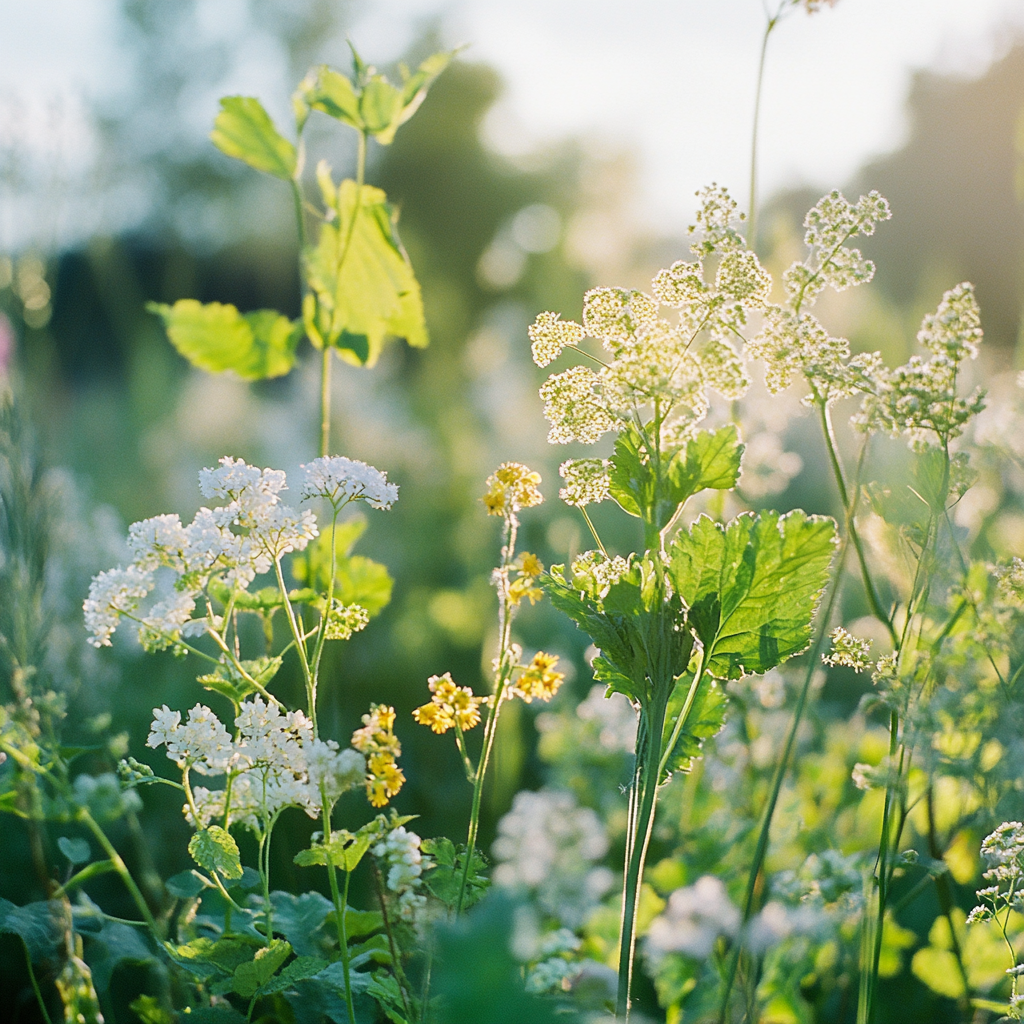Ethnobotany and medicinal plants in Picardy

Ethnobotany and medicinal plants in Picardy
Picardy, a historic region in northern France, has a long tradition of medicinal plant use. The region is rich in biodiversity, with a variety of plants used for centuries for therapeutic and medicinal purposes. Ethnobotany, the science that studies the interactions between plants and societies, plays a key role in preserving this knowledge. This discipline relies on the transmission of local knowledge on the uses of plants, particularly for medicinal, food and craft purposes, often inherited from past generations.
In France, ethnobotanical research initiatives have made it possible to collect and preserve this knowledge, including in regions such as Picardy, where the use of plants for folk medicine was commonplace until the middle of the 20th century.
Numerous associations, such as EPI (Études Populaires et Initiatives), have dedicated themselves to recording and restoring this knowledge of plants, with a particular focus on rural practices such as the gathering of simples and herbalists, who still prepare and sell medicinal plants based on this ancient knowledge. In Picardy, as in other regions of France, the use of plants for medicinal purposes goes back to ancient times, and local healers, often referred to as "herbalists", had in-depth knowledge of local plants and their benefits. This knowledge has been passed down orally from generation to generation.
In ethnobotany, each region has its own practices and uses for plants. In Picardy, several typical medicinal plants are recognized for their effectiveness in treating common ailments:
Yarrow (Achillea millefolium) is a very common plant in Picardy. It grows naturally in meadows, roadsides and slightly dry or sunny areas. This herbaceous plant is well adapted to temperate climates like Picardy's, and is one of the native species found throughout the region.
Yarrow is renowned for its medicinal properties, notably its anti-inflammatory and healing properties. Traditionally, it is used as an infusion or poultice to treat skin ailments and inflammation. Its presence in the Picardy landscape makes it an important medicinal plant in the local ethnobotanical heritage.
.

Roman chamomile (Chamaemelum nobile) does grow in Picardy, although it is not the most widespread plant in the region. This plant prefers light, well-drained soils, and can be found in some meadows and agricultural areas. It is more common in certain more southerly regions, but thanks to gardens and crops dedicated to medicinal plants, it is also present in Picardy.

Nettle (Urtica dioica) is an extremely widespread plant in Picardy, as in many other parts of France. It often grows in nutrient-rich areas, such as roadsides, abandoned lots, gardens and undergrowth. Nettle is well adapted to nitrogen-rich soils, which explains its proliferation in rural and agricultural areas of the region.
This plant has long been used for its many medicinal properties. In Picardy, nettle is known for its remineralizing, toning and anti-inflammatory properties. It is often used to treat joint pain, anemia and other metabolic disorders. In phytotherapy, it is also prized for its high vitamin and mineral content, notably iron, calcium and silica.
In short, nettle is an important plant in the local ethnobotany of Picardy, both for its medicinal uses and its many other applications in cooking and gardening.
Lime (Tilia cordata): Lime (particularly small-leaf lime or Tilia cordata) is common in Picardy. This tree is often planted in parks, gardens and along roadsides. It also occurs naturally in some of the region's forests. Linden is valued for its calming properties, and is often harvested to make infusions to treat anxiety and promote sleep.
Mallow (Malva sylvestris): appreciated for its emollient and soothing properties, it is often used to treat respiratory tract irritation and coughs.
Meadowsweet (Filipendula ulmaria):
Common in wetlands, this plant is prized for its anti-inflammatory and analgesic properties.
Lanceolate plantain (Plantago lanceolata) :
A wild plant frequently found in meadows and roadsides, used for its anti-inflammatory and expectorant properties.
Black Elder (Sambucus nigra):
This shrub is common in hedges and woods. It is used for its antiviral properties and to treat respiratory infections.
Dandelion (Taraxacum officinale):
Common in meadows and lawns, dandelion is valued for its depurative and diuretic properties.
Burdock (Arctium lappa):
Grows naturally in waste ground and meadows. Known for its purifying and depurative properties, especially for skin disorders.
Horsetail (Equisetum arvense):
Common in wetlands, horsetail is used for its remineralizing properties, particularly for bones and hair.
Today, a number of initiatives aim to preserve this traditional knowledge.

Local associations in Picardy are dedicated to safeguarding ethnobotany and medicinal plants. For example, workshops and botanical walks are organized to introduce the general public to local plants and their uses.
Ethnobotany in Picardy represents a rich heritage, deeply rooted in local knowledge of plants. This region, like many others in France, has a long tradition of passing on knowledge about wild and cultivated plants, particularly for their food, medicinal and craft uses.
Picardy's wild plants, for example, are studied and protected as part of several regional initiatives to preserve plant biodiversity, and these actions are accompanied by awareness-raising programs to promote this local knowledge. Publications have shown that around a quarter of Picardy's native plant species are threatened, underlining the importance of preservation efforts.
In addition, associations such as EPI (Études Populaires et Initiatives) play an essential role in collecting and promoting this traditional plant-related knowledge. EPI conducts ethnobotanical field surveys to record and analyze popular uses of plants in domestic and medicinal contexts. This work is supported by a substantial documentary and photographic base, and is regularly shared at conferences, workshops and exhibitions.
This research is not limited to Picardy alone, but is part of a wider effort to protect and promote natural heritage throughout the Hauts-de-France region. To find out more about these efforts and preservation initiatives, you can explore the resources available on the Hauts-de-France natural heritage portals or the EPI association.
The transmission of this knowledge is essential to its preservation. In this context, modern herbalists, often trained in phytotherapy, continue to pass on this knowledge while relying on recent scientific research to validate the effects of plants.
The revival of phytotherapy in Picardy is part of a wider movement in France towards a return to natural medicines. This renewed interest in medicinal plants, which were once an integral part of local therapeutic practices, is now manifesting itself through various initiatives, such as the integration of plants into modern healthcare and the promotion of clinical phytotherapy.
Phytotherapy is enjoying a new lease of life, thanks in particular to the boom in natural medicine and growing demand for plant-based treatments. In Picardy, this is illustrated by the growing number of phytotherapy practitioners and local initiatives to reconnect people with ancestral knowledge of plants. This approach combines traditional knowledge, inherited from local and regional practices, with modern scientific advances to ensure the safety and efficacy of treatments.
Research carried out on local species in Picardy, such as pistachio lentisque, reflects this desire to modernize the use of medicinal plants while respecting local traditions. Indeed, these plants have long been used for their therapeutic virtues and are now being reintroduced into contemporary health practices.
With the growing interest in natural and alternative medicines, phytotherapy, which uses plant extracts to treat various illnesses, is enjoying a revival. People in Picardy are increasingly interested in using local plants to treat themselves more naturally, and botanical gardens such as Saint-Victor in Picardy showcase these plants in exhibitions.




